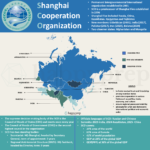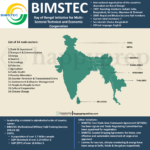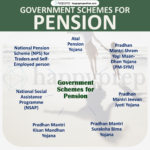Governor Generals and Viceroys of India
Governor Generals and Viceroys of India
Introduction
After the Battle of Buxar in 1764, the British emerged as the supreme power in Bengal and started consolidating the administrative power in Bengal. Initially the company was allowed to function independently but due to mismanagement and malpractices of the officials of the company, regulating acts were passed to regulate the affairs of the company and a new post Governor-General of Bengal was created.
Governors-General of Bengal (1773–1833)
Name | Tenure | Major Actions / Events |
Warren Hastings | 1773–1785 | – First Governor-General under Regulating Act 1773 |
Lord Cornwallis | 1786–1793 | – Permanent Settlement in Bengal (1793) |
Sir John Shore | 1793–1798 | – Policy of non-intervention |
Lord Wellesley | 1798–1805 | – Introduced Subsidiary Alliance |
Lord Cornwallis (2nd term) | 1805 | – Died shortly after arrival in India |
Sir George Barlow | 1805–1807 | – Abolished Wellesley’s aggressive policies |
Lord Minto I | 1807–1813 | – Charter Act of 1813 (ended Company’s trade monopoly) |
Lord Hastings | 1813–1823 | – Ended policy of non-intervention |
Lord Amherst | 1823–1828 | – 1st Anglo-Burmese War (1824–26), Treaty of Yandabo |
Lord William Bentinck | 1828–1835 | – Abolition of Sati (1829) |
Governors-General of India (1833–1858)
The designation was changed from the Governor-General of Bengal to the Governor-General of India by the Charter Act of 1833.
Name | Tenure | Major Actions / Events |
Lord William Bentinck | 1833–1835 | – First Governor-General of India |
Sir Charles Metcalfe | 1835–1836 | – Liberator of the press (freedom of press act, 1835) |
Lord Auckland | 1836–1842 | – 1st Anglo-Afghan War (1839–42), disastrous British retreat |
Lord Ellenborough | 1842–1844 | – Ended Afghan War |
Lord Hardinge I | 1844–1848 | – 1st Anglo-Sikh War (1845–46), Treaty of Lahore |
Lord Dalhousie | 1848–1856 | – Doctrine of Lapse (Satara, Jhansi, Nagpur annexed) |
Viceroys of India (1858–1947)
After the Revolt of 1857, Government of India Act 1858 transferred control from East India Company to British Crown. The post of Governor-General of India was replaced by a new post, Viceroy of India.
Name | Tenure | Major Actions / Events |
Lord Canning | 1856–1862 | – Last Governor-General & first Viceroy |
Lord Elgin I | 1862–1863 | – Passed away during service |
Sir John Lawrence | 1864–1869 | – Policy of non-interference in Afghanistan |
Lord Mayo | 1869–1872 | – Financial decentralisation |
Lord Northbrook | 1872–1876 | – Attempted to reduce salt tax |
Lord Lytton | 1876–1880 | – 2nd Anglo-Afghan War |
Lord Ripon | 1880–1884 | – Repeal of Vernacular Press Act |
Lord Dufferin | 1884–1888 | – 3rd Anglo-Burmese War (1885) |
Lord Lansdowne | 1888–1894 | – Indian Councils Act (1892) |
Lord Elgin II | 1894–1899 | – Plague outbreaks |
Lord Curzon | 1899–1905 | – Partition of Bengal (1905) |
Lord Minto II | 1905–1910 | – Minto-Morley Reforms (Indian Councils Act, 1909) |
Lord Hardinge II | 1910–1916 | – Capital shifted from Calcutta to Delhi (1911) |
Lord Chelmsford | 1916–1921 | – Montagu-Chelmsford Reforms (Govt of India Act, 1919) |
Lord Reading | 1921–1926 | – Chauri Chaura incident |
Lord Irwin | 1926–1931 | – Simon Commission |
Lord Willingdon | 1931–1936 | – Second Round Table Conference |
Lord Linlithgow | 1936–1943 | – Longest-serving Viceroy |
Lord Wavell | 1943–1947 | – Wavell Plan, Simla Conference (1945) |
Lord Mountbatten | Mar–Aug 1947 | – Last Viceroy of India |
Want to read some more articles?
-
 Shanghai Cooperation Organization (SCO): Origin, Members, Facts, etc for UPSC and other exams
Shanghai Cooperation Organization (SCO): Origin, Members, Facts, etc for UPSC and other exams -
 BRICS: Origin, members and others for UPSC, PSC & other exams
BRICS: Origin, members and others for UPSC, PSC & other exams -
 BIMSTEC for UPSC: Origin, Members & More
BIMSTEC for UPSC: Origin, Members & More -
 General Science for Competitive exams: UPSC, PSC, APFC, EO-AO, SSC, etc
General Science for Competitive exams: UPSC, PSC, APFC, EO-AO, SSC, etc -
 THE TRADE UNIONS ACT, 1926 for UPSC EPFO APFC/EO-AO, ALC, and Other exams
THE TRADE UNIONS ACT, 1926 for UPSC EPFO APFC/EO-AO, ALC, and Other exams -
 Understanding Macroenvironment: Marketing Environment in Principles of Marketing
Understanding Macroenvironment: Marketing Environment in Principles of Marketing -
 Understanding Microenvironment: Marketing Environment in Principles of Marketing
Understanding Microenvironment: Marketing Environment in Principles of Marketing -
 Reports by International Organizations for UPSC and Other exams
Reports by International Organizations for UPSC and Other exams -
 Government Schemes for Pension
Government Schemes for Pension
Recruitment notifications update!
-
Recruitment 2025: Recruitment for Teaching Staff in The School of Planning and Architecture, New Delhi - Vacancy, Posts, Grade Pay, etc
-
Recruitment 2025: Vacancies in Inter-University Centre for Astronomy and Astrophysics (IUCAA)
-
Recruitment 2025: Recruitment on Deputation basis in National Anti Doping Agency (NADA)
-
Recruitment 2025: Various vacancies in Artificial Limbs Manufacturing Corporation of India (ALIMCO)
-
Recruitment 2025: Various vacancies in Land Ports Authority of India
Copyright© 2024 | All rights reserved | Made in India